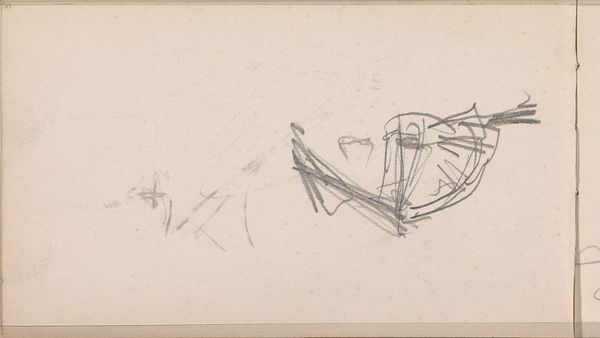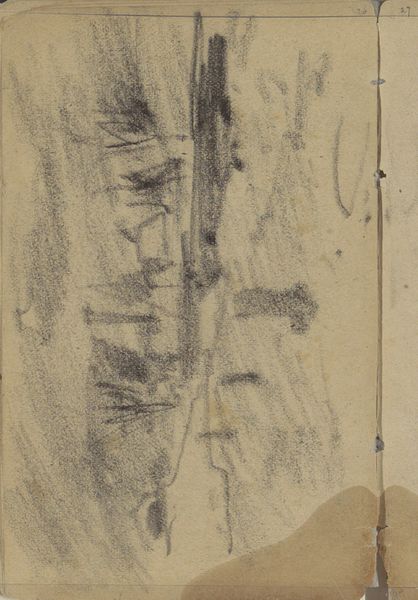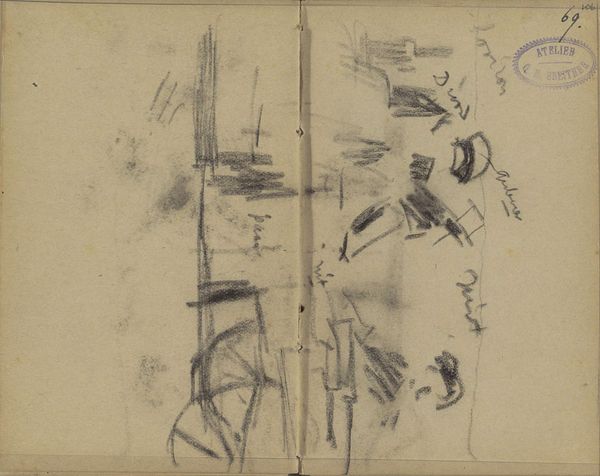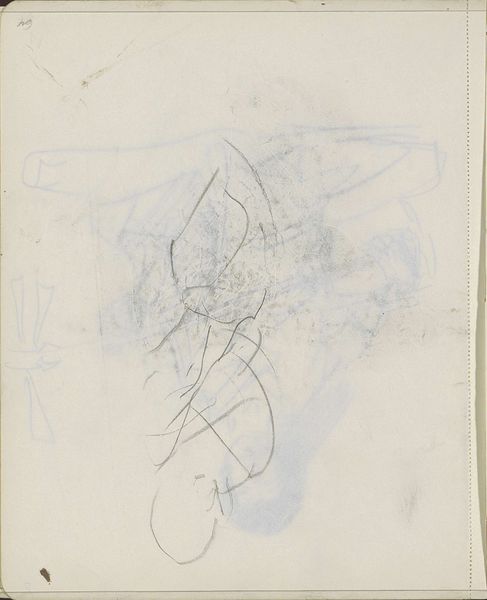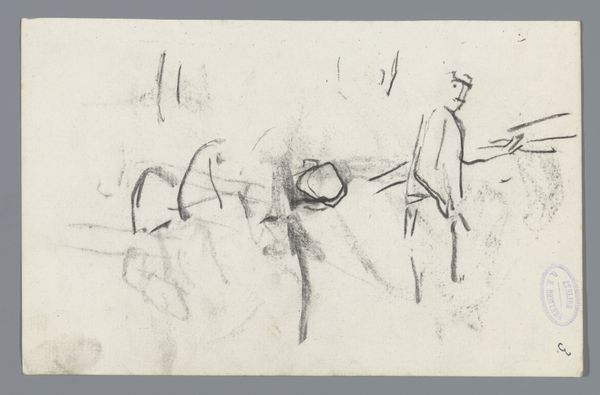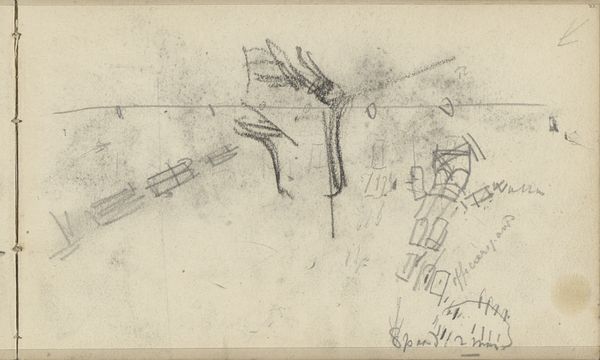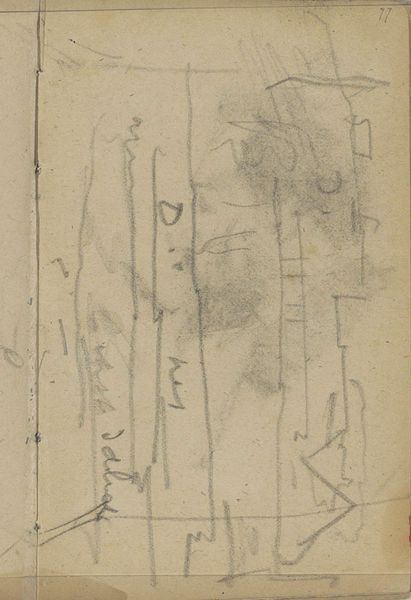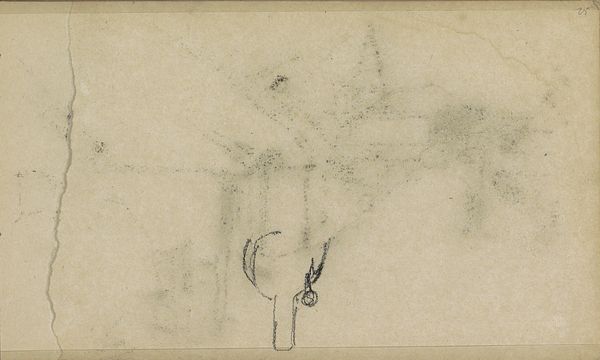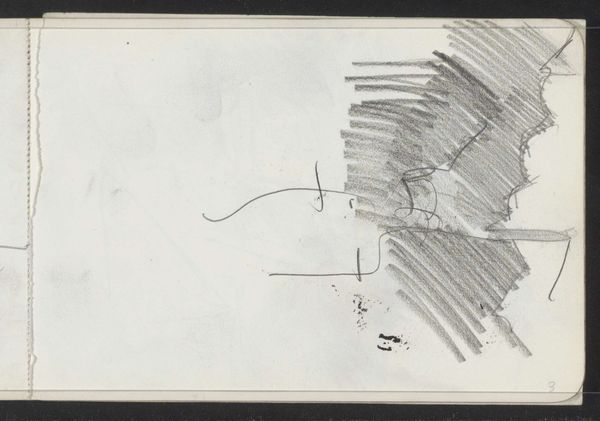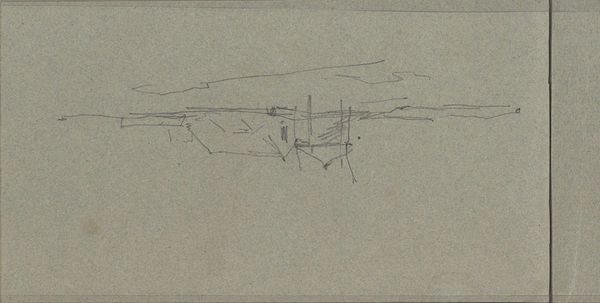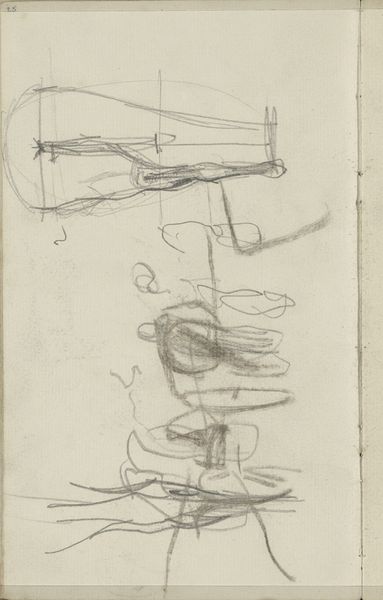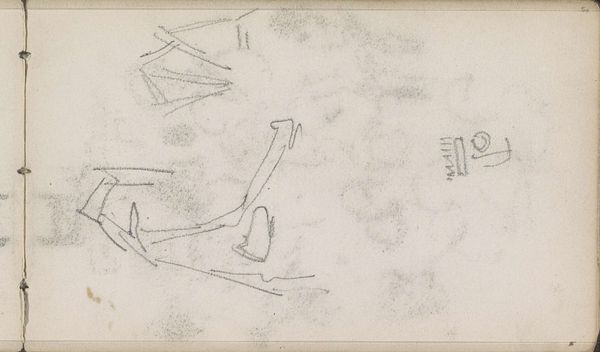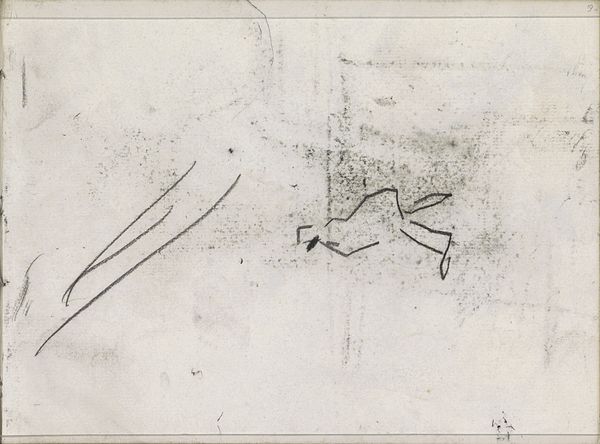
drawing, paper, pencil
#
drawing
#
impressionism
#
figuration
#
paper
#
pencil
Copyright: Rijks Museum: Open Domain
Curator: Here we have a fascinating pencil drawing on paper by George Hendrik Breitner, dating from between 1881 and 1883. It's titled "Figuurstudies", which translates to "Figure Studies." What's your first take on it? Editor: Immediately, I'm struck by its raw, unfinished quality. It feels like a glimpse into the artist's process, like we’re catching a fleeting moment of creative exploration. The figures are so gestural, almost abstracted. It invites the viewer to fill in the blanks. Curator: Indeed. Breitner was known for capturing the bustling street life of Amsterdam and these figure studies showcase his ability to quickly capture movement and form. He prioritised the immediacy of the impression over precise detail. Think about how the artistic and political landscapes valued representations of modern life at the time. Editor: Right. And consider what modern life meant then for people of colour, poor and working-class individuals, and women: it would have meant displacement, alienation, overwork. To me, these incomplete forms also suggest vulnerability and dispossession. We cannot define or see them. It is almost as if they do not matter, like a preliminary sketch that the author threw out in favour of his ‘master’ piece. What figures do you think are rendered here, anyway? Curator: It is difficult to determine. Breitner very rarely exhibited sketches like this and he focused on representations of working-class women, often seamstresses, maids, or women soliciting on the city streets. These professions represented social change in Dutch society, along with concerns about industrialization and morality. Editor: And perhaps Breitner wasn't merely observing these societal changes; maybe he was complicit. It's easy to fetishize the “realism” of his street scenes, but what responsibility does the artist bear in documenting – or perhaps exploiting – the lives of the marginalized? Did the people he sketched ever gain to see any advantage? These drawings give a snapshot into a world. But it’s an unstable world on the move: sketchy. They encourage us to wonder whose stories get prioritized and who is excluded from mainstream cultural narratives. Curator: That's a valid point. He moved beyond the confines of traditional genre painting, using photography as source material, and he depicted urban life as modern. The focus wasn't just about an aesthetic style. It served social and commercial roles to reinforce certain dominant values. Editor: Precisely. So while these 'Figure Studies' might seem like just preliminary sketches, they open up deeper questions. It is not simply about line and composition. Curator: Exactly. We can investigate what these quick pencil strokes, now housed in a prestigious institution like the Rijksmuseum, communicate about art's role in representing, or misrepresenting, the complexities of social life during the late 19th century. Editor: Thank you. This work is not what meets the eye. Let’s remember that there are people behind images, that matter!
Comments
No comments
Be the first to comment and join the conversation on the ultimate creative platform.
